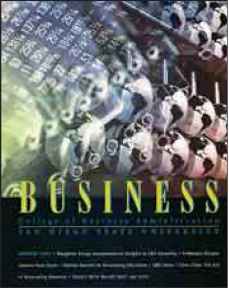Developing and Executing the PR Program
Because of the broad role that public relations may be asked to play, the PR program may need to extend beyond promotion. A broader definition of the target market, additional communications objectives, and different messages and delivery systems may be employed. Let us examine this process.
Determining Relevant Target Audiences The targets of public relations efforts may vary, with different objectives for each. Some may be directly involved in selling the product; others may affect the firm in a different way (e.g., they may be aimed at stockholders or legislators). These audiences may be internal or external to the firm.
Internal audiences may include the employees of the firm, stockholders and investors, members of the local community, suppliers, and current customers. Why are community members and customers of the firm considered internal rather than external? According to John Marston, it's because these groups are already connected with the organization in some way and the firm normally communicates with them in the ordinary routine of work.15 External audiences are those people who are not closely connected with the organization (e.g., the public at large).
1. Does the plan reflect a thorough understanding of the company's business situation?
2. Has the PR program made good use of research and background sources?
3. Does the plan include full analysis of recent editorial coverage?
4. Do the PR people fully understand the product's strengths and weaknesses?
5. Does the PR program describe several cogent, relevant conclusions from the research?
6. Are the program objectives specific and measurable?
7. Does the program clearly describe what the PR activity will be and how it will benefit the company?
8. Does the program describe how its results will be measured?
9. Do the research, objectives, activities, and evaluations tie together?
10. Has the PR department communicated with marketing throughout the development of the program?
Figure 17-2 Ten questions for evaluating public relations plans
Figure 17-2 Ten questions for evaluating public relations plans
Exhibit 17-4 Annual reports serve a variety of purposes

Exhibit 17-3 An example of a newsletter used for internal communication
It may be necessary to communicate with these groups on an ongoing basis for a variety of reasons, ranging from ensuring goodwill to introducing new policies, procedures, or even products. A few examples may help.
Employees of the Firm Maintaining morale and showcasing the results of employees' efforts are often prime objectives of the public relations program. Organizational newsletters, notices on bulletin boards, paycheck envelope stuffers, direct mail, and annual reports are some of the methods used to communicate with these groups. Exhibit 17-3 shows one such internal communication used by the Business School at San Diego State University.
Personal methods of communicating may be as formal as an established grievance committee or as informal as an office Christmas party. Other social events, such as corporate bowling teams or picnics, are also used to create goodwill.
Stockholders and Investors You may think an annual report like the one in Exhibit 17-4 just provides stockholders and investors with financial information regarding the firm. While this is one purpose, annual reports are also a communications channel for informing this audience about why the firm is or is not doing well, future plans, and other information that goes beyond numbers.
For example, McDonald's has successfully used annual reports to fend off potential PR problems. One year the report described McDonald's recycling efforts to alleviate consumers' concerns about waste; another report included a 12-page spread on food and nutrition. Other companies use similar strategies, employing shareholders' meetings, video presentations, and other forms of direct mail. General Motors' annual public interest report is sent to shareholders and community members to detail the company's high standards of corporate responsibility. GM also produces a sustainabil-ity report to update interested parties on its progress. Companies have used these approaches to generate additional investments, to bring more of their stocks "back home" (i.e., become more locally controlled and managed), and to produce funding to solve specific problems, as well as to promote goodwill.
Community Members People who live and work in the community where a firm is located or doing business are often the target of public relations efforts. Such efforts may involve ads informing the community of activities that the organization is
Exhibit 17-4 Annual reports serve a variety of purposes


Exhibit 17-5 Chevron demonstrates concern for the public engaged in—for example, reducing air pollution, cleaning up water supplies, or, as shown in Exhibit 17-5, protecting turtles. (As you can see, the community can be defined very broadly.) Demonstrating to people that the organization is a good citizen with their welfare in mind may also be a reason for communicating to these groups.
Suppliers and Customers An organization wishes to maintain goodwill with its suppliers as well as its consuming public. If consumers think a company is not socially conscious, they may take their loyalties elsewhere. Suppliers may be inclined to do the same.
Sometimes sponsoring a public relations effort results in direct evidence of success. For example, the "Just say no" to drugs campaign was a boon to companies manufacturing drug testing kits, hospitals offering drug rehabilitation programs, and TV news programs' ratings.16 Indirect indications of the success of PR efforts may include more customer loyalty, less antagonism, or greater cooperation between the firm and its suppliers or consumers.
Sometimes a public relations effort is targeted to more than one group. For example, San Diego Gas & Electric (SDGE), the public utility company for the San Diego area, has suffered from extreme negative attitudes among its customers due to its high rates. This problem was aggravated when a series of management blunders resulted in even higher rates and SDGE announced plans to build a nuclear plant in one of the lagoons near the ocean, resulting in protests from consumers and environmentalists. Stockholders and potential investors lacked trust, and employee morale was low. (Company cars with the SDGE logo on the doors were vandalized, and drivers were threatened to the point where the identifying logos had to be removed.)
The public relations plan developed to deal with these problems targeted a variety of publics and employed a number of channels. TV spots showed consumers how to save energy, print ads explained the reasons for the energy purchases made by management, and PR programs were developed to foster more community interaction. These programs have led to much more favorable attitudes among all the publics targeted. (At least employees can put the SDGE logo back on their cars.)
Relevant audiences may also include people not directly involved with the firm. The press, educators, civic and business groups, governments, and the financial community can be external audiences.
The Media Perhaps one of the most critical external publics is the media, which determine what you will read in your newspapers or see on TV, and how this news will be presented. Because of the media's power, they should be informed of the firm's actions. Companies issue press releases and communicate through conferences, interviews, and special events. The media are generally receptive to such information as long as it is handled professionally; reporters are always interested in good stories.
Continue reading here: Advantages and Disadvantages of Public Relations
Was this article helpful?
Readers' Questions
-
spartaco1 month ago
- Reply
